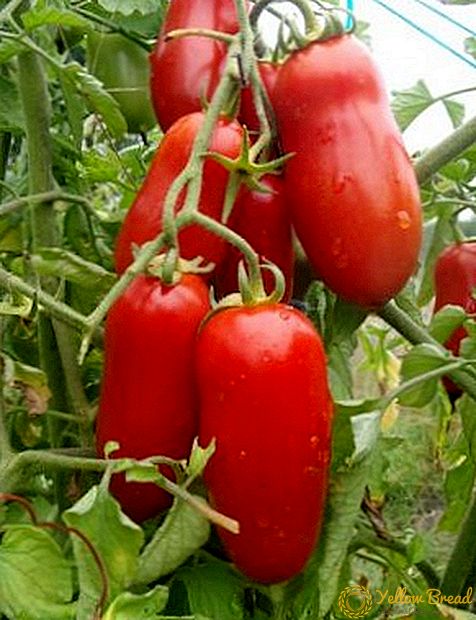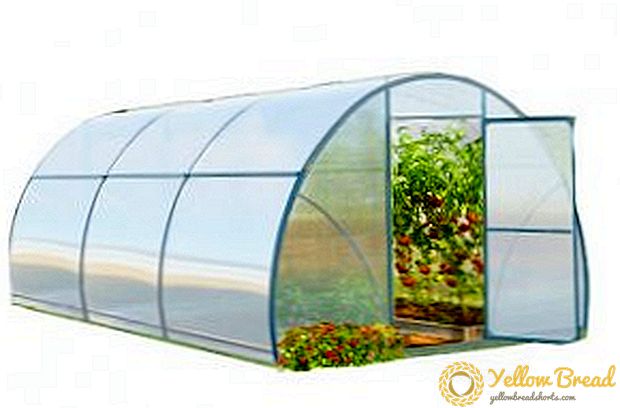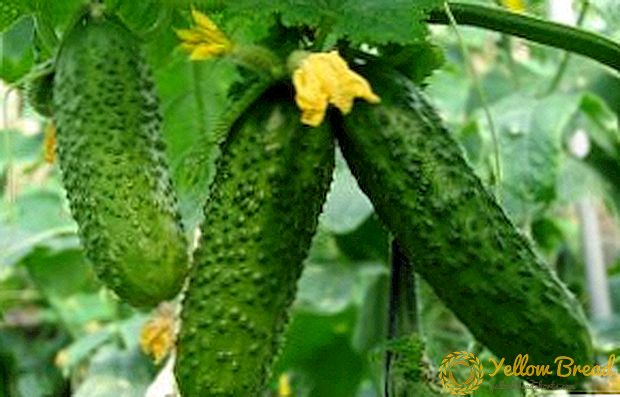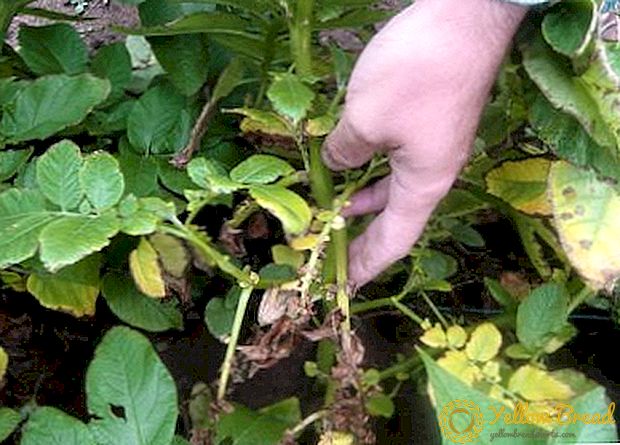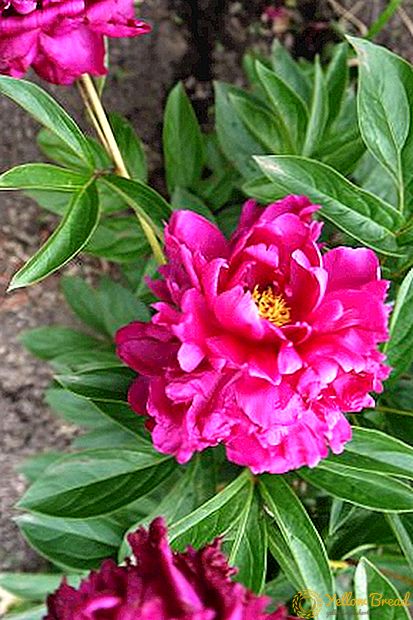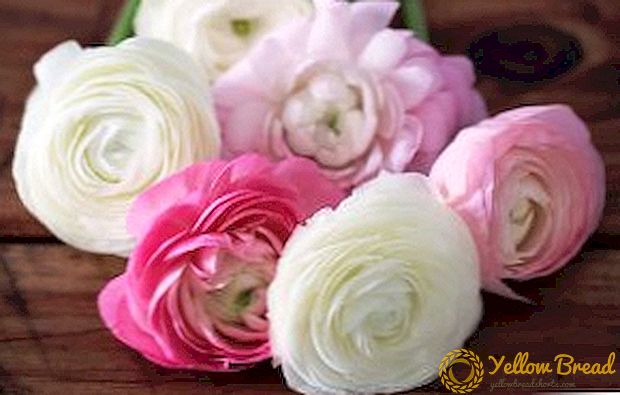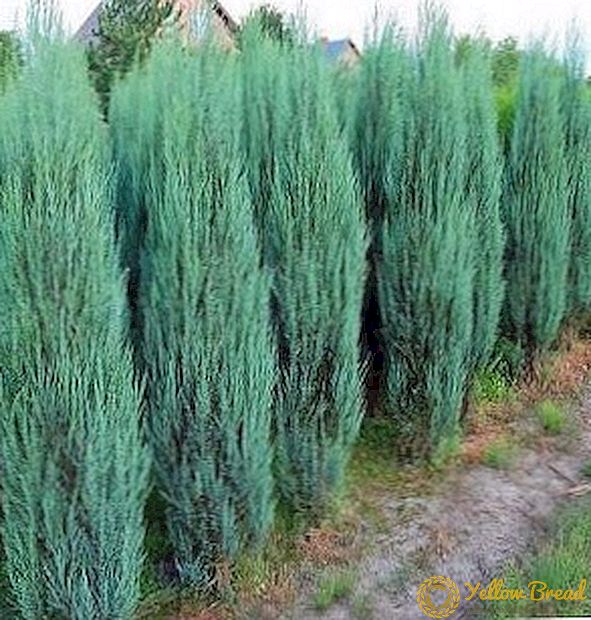 Translated from English, Blue arrow means blue arrow, agree that the name describes it succinctly and succinctly. Juniper rocky "Blue Herrow" is one of the most sought-after varieties of the cypress family, the description of this variety and its undeniable merits have long been appreciated by gardeners. The plant has earned the recognition and respect of landscape designers. And all because a beautiful bush of ideal form can become both the center of the composition and an assistant in the creation of a juniper alley. Its compact, elegant forms provide an opportunity for landing even on a tiny plot.
Translated from English, Blue arrow means blue arrow, agree that the name describes it succinctly and succinctly. Juniper rocky "Blue Herrow" is one of the most sought-after varieties of the cypress family, the description of this variety and its undeniable merits have long been appreciated by gardeners. The plant has earned the recognition and respect of landscape designers. And all because a beautiful bush of ideal form can become both the center of the composition and an assistant in the creation of a juniper alley. Its compact, elegant forms provide an opportunity for landing even on a tiny plot.
- Botanical description
- Landing features
- Soil requirements
- Location selection
- Juniper planting rules
- Peculiarities of care
- How to water
- Fertilizer and dressing
- Pruning plants
- Reproduction "Blue Arrow"
- Diseases and pests
Botanical description
Juniper rocky "Blue Arrow" refers to evergreen coniferous shrubs. The height grows to 5 m. The branches grow annually by about 15 cm. The needles are blue, and sometimes almost blue. The plant bears cones.
Landing features
It is best to plant a shrub in a sunny place, well protected from the wind, as it absolutely does not tolerate hot winds. For Blue Arrow, moist air is very desirable, it will be excellent to install an automatic irrigation system near the plant.
Soil requirements
The shrub can grow in any soil, its chemical composition is irrelevant, which makes it even more attractive to gardeners. The most important thing for good growth of this variety is well-drained soil, in which excess moisture will not linger. The rest of the plant unpretentious.
Location selection
The ideal place for landing will be a small hill.
Juniper planting rules
When planting juniper Blue Arrow and studying its description, it is necessary to take into account that preference should be given to acclimatized saplings in containers. Thus, when planting, the roots are not deformed and the plant takes root faster and better.
In cases where it is planned to plant several seedlings, it is necessary to retreat from each planting hole about 2 m (diameter of the crown of the future overgrown shrub). Thus, the plants will not interfere with each other and quickly get stronger. 
Peculiarities of care
To ensure good growth of the juniper rocky variety "Blue Arrow" it is necessary to perform a number of procedures familiar to any gardener during planting and care.There are no special requirements for this variety. The only thing you can regularly indulge in is the loosening of the soil, such a procedure is more likely to be desirable than obligatory.
How to water
Junipers are recommended to be watered infrequently. The only exception is the first week after planting, at this time it is very important to ensure daily watering. In a very dry summer, it is enough once every 10 days. Due to the structure of the root system of the Blue Arrow variety, the shrub can independently remove moisture from the soil. 
Fertilizer and dressing
In addition to fertilizer, which must be introduced into the soil directly during planting, mulching with pine slivers or bark is encouraged.
This procedure will delay the moisture and give the shrub a neat look. It is necessary to feed the plant no more often than once a year, preferably in the spring.
Pruning plants
Thanks to its perfect conical shape, the juniper rocky "Blue Arrow", as you can see in the photo, does not need pruning.
Reproduction "Blue Arrow"
This grade is propagated by cutting or seed method. The most effective and reliable cutting is considered. To do this, the young shoots are cut in the spring, immediately planted in loose soil (it is desirable to clear the cuttings before planting 3 cm).
 As for the breeding of juniper seeds, this method is used infrequently, since the appearance of the plant will not have to be expected earlier than after 5 years.
As for the breeding of juniper seeds, this method is used infrequently, since the appearance of the plant will not have to be expected earlier than after 5 years.Diseases and pests
The most common disease in this class is rust. When this problem occurs, the infected branches should be immediately removed and the plant treated with "Fitocid" 1 time in 14 days until the disappearance of painful symptoms.
Insect pests should beware of mining moths and aphids.With the defeat of aphids using a spray "Fitoferm", and to deal with aphids effective solution "Decis". In either case, the bush is sprayed once every 14 days.  In order to prevent infection of the shrub and its destruction by pests, regularly inspect the needles, since any symptoms can be identified visually and in the early stages.
In order to prevent infection of the shrub and its destruction by pests, regularly inspect the needles, since any symptoms can be identified visually and in the early stages.

